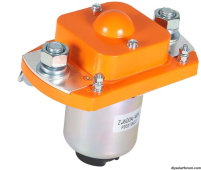budgetsolarinstall
New Member
“The inspector asked about the battery. He may require a remote battery disconnect. I'm not having any luck w Kilovault. Their battery has a breaker disconnect and the Solark has a breaker disconnect.
Our plans they approved do not show an external battery disconnect. And they approved the plans and issued us the permit.
Vermont does not require this but I don't know NH inspector and since it's in the city they may be sticklers.
Battery remote disconnect. The disconnect mounts outside near the other disconnects but is low voltage control wire such as cat6 to the battery.
I use battery cable disconnects near the battery no problem, cable to cable.
This would be something with low voltage wires. We don't use them here in VT but NH may be different.”
Does anybody have any suggestions?
I think the inspector is confusing an “AC coupled” battery solution like Tesla power wall with a DC battery system. The Tesla power wall is its own system, and I guess it makes sense to have a remote disconnect switch for it.
Our plans they approved do not show an external battery disconnect. And they approved the plans and issued us the permit.
Vermont does not require this but I don't know NH inspector and since it's in the city they may be sticklers.
Battery remote disconnect. The disconnect mounts outside near the other disconnects but is low voltage control wire such as cat6 to the battery.
I use battery cable disconnects near the battery no problem, cable to cable.
This would be something with low voltage wires. We don't use them here in VT but NH may be different.”
Does anybody have any suggestions?
I think the inspector is confusing an “AC coupled” battery solution like Tesla power wall with a DC battery system. The Tesla power wall is its own system, and I guess it makes sense to have a remote disconnect switch for it.



